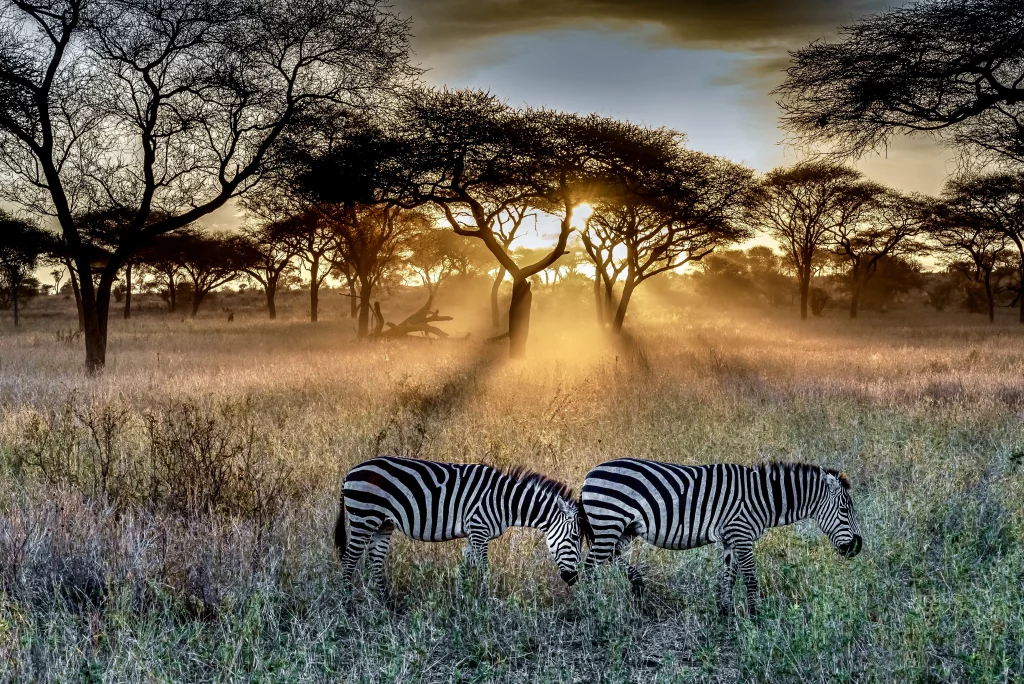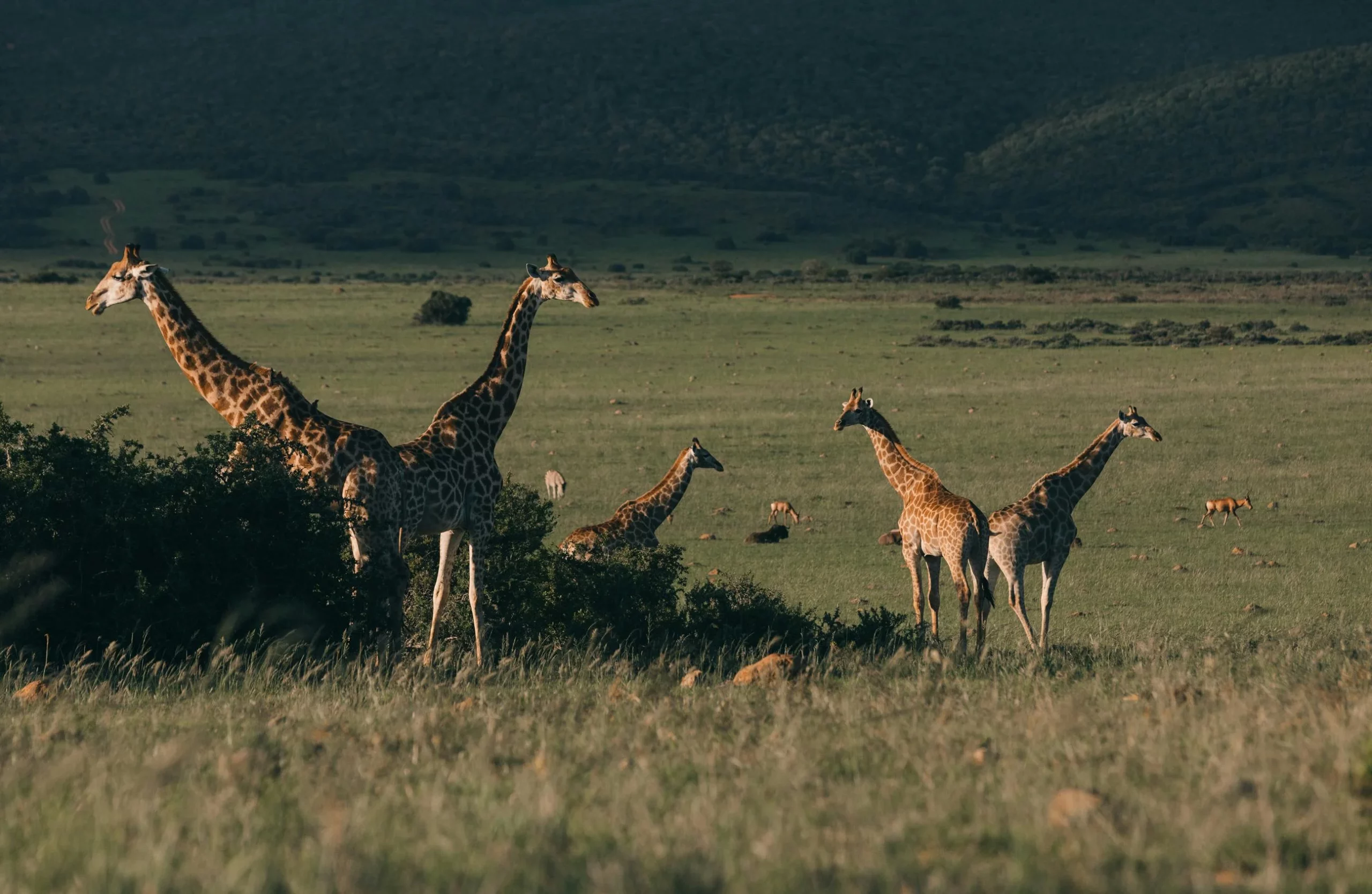
Serengeti or Masai Mara: Which is better to visit ?
Masai Mara or Serengeti: Similarities, Differences & Which is Better different months of the year
Maasai Mara National Reserve in Kenya and Serengeti National Park in Tanzania are two of the most renowned wildlife conservation areas on the planet. These iconic locations are not only abundant with diverse wildlife, flora, and fauna but also serve as the stage for one of nature’s most awe-inspiring spectacles, the Great Wildebeest Migration. Despite being distinct entities, these parks are interconnected, leading to the common dilemma: which one should you choose for your African safari adventure? Let’s explore the similarities and differences to help you make an informed decision.
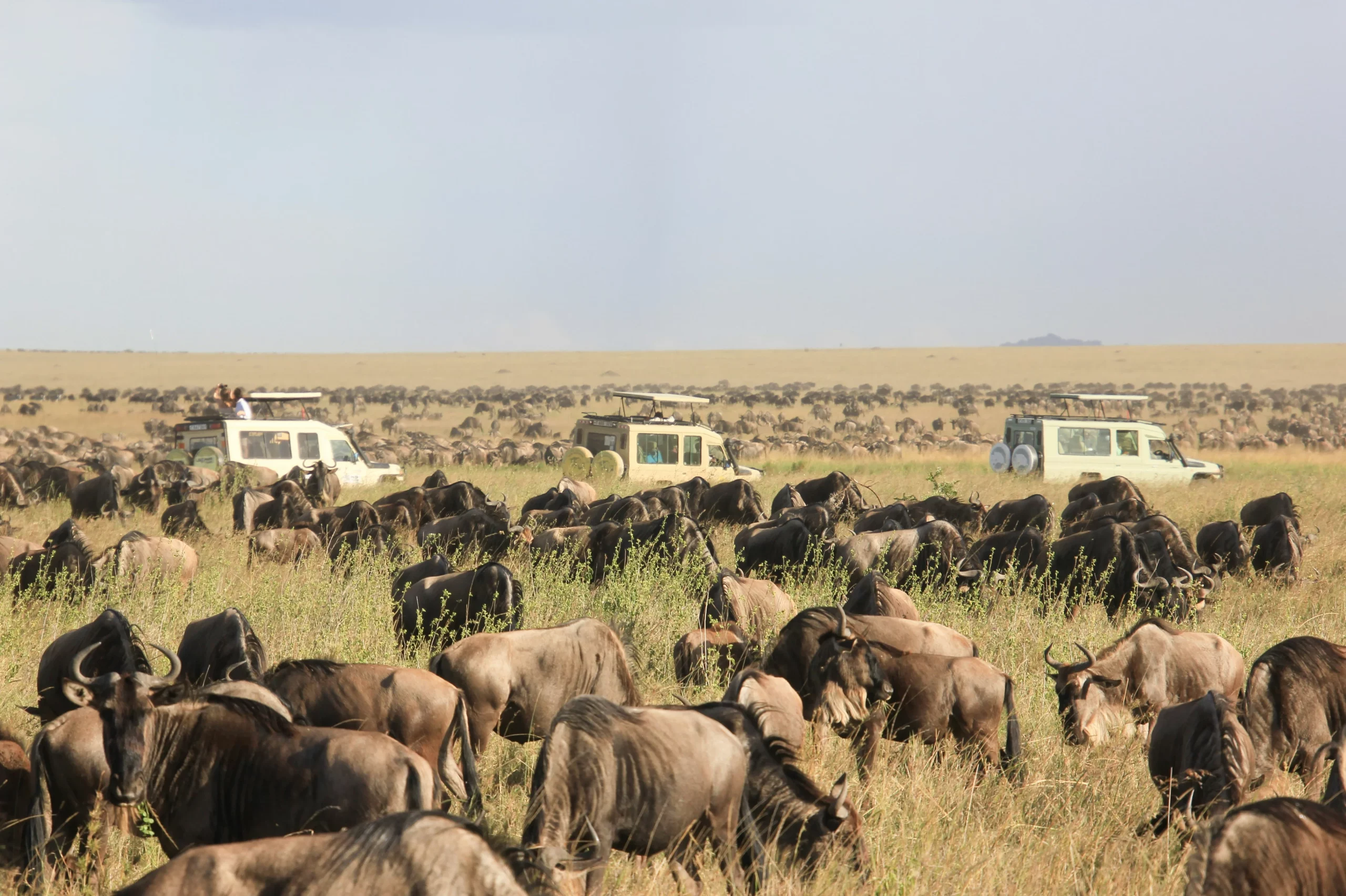
Similarities
Both the Masai Mara National Reserve and Serengeti National Park form an expansive and interconnected wildlife and geographical ecosystem within East Africa. Here are the primary similarities between these two incredible destinations:
Wildlife:
In both the Masai Mara National Reserve and the Serengeti National Park, the wildlife diversity is strikingly similar, offering travelers an equally thrilling chance to encounter the ‘Big Five’ or the extended ‘Big Nine.’ This list includes majestic creatures such as Lions, Leopards, Cheetahs, Elephants, Rhinos, African Buffalos, Giraffes, Hippos, and Zebras. While the absolute numbers of each species might differ, for instance, the Serengeti boasts a larger lion population compared to the Masai Mara, the density is notably higher in the Masai Mara. This means that during a Masai Mara safari, visitors might spot these incredible animals more frequently. Explore our detailed guide on this 3-day Masai Mara Safari Package.
Landscape:
When it comes to the breathtaking landscapes of the Serengeti National Park and the Masai Mara National Reserve, both offer a mesmerizing blend of similarities and differences. For the casual observer, the sweeping vistas of these renowned African safari destinations appear quite alike. Both feature vast expanses of open grasslands, punctuated by occasional rocky outcrops and seasonal riverlets. However, the Masai Mara’s altitude ranges from approximately 1,500 to 2,200 meters (4,950–7,200 ft), giving it a slightly elevated perspective compared to the Serengeti, which spans altitudes from about 920 to 1,850 meters (3,036 to 6,060 ft). This subtle variance in elevation adds a unique dimension to each park’s landscape, enhancing the distinct yet interconnected experience of visiting either the Masai Mara or the Serengeti.
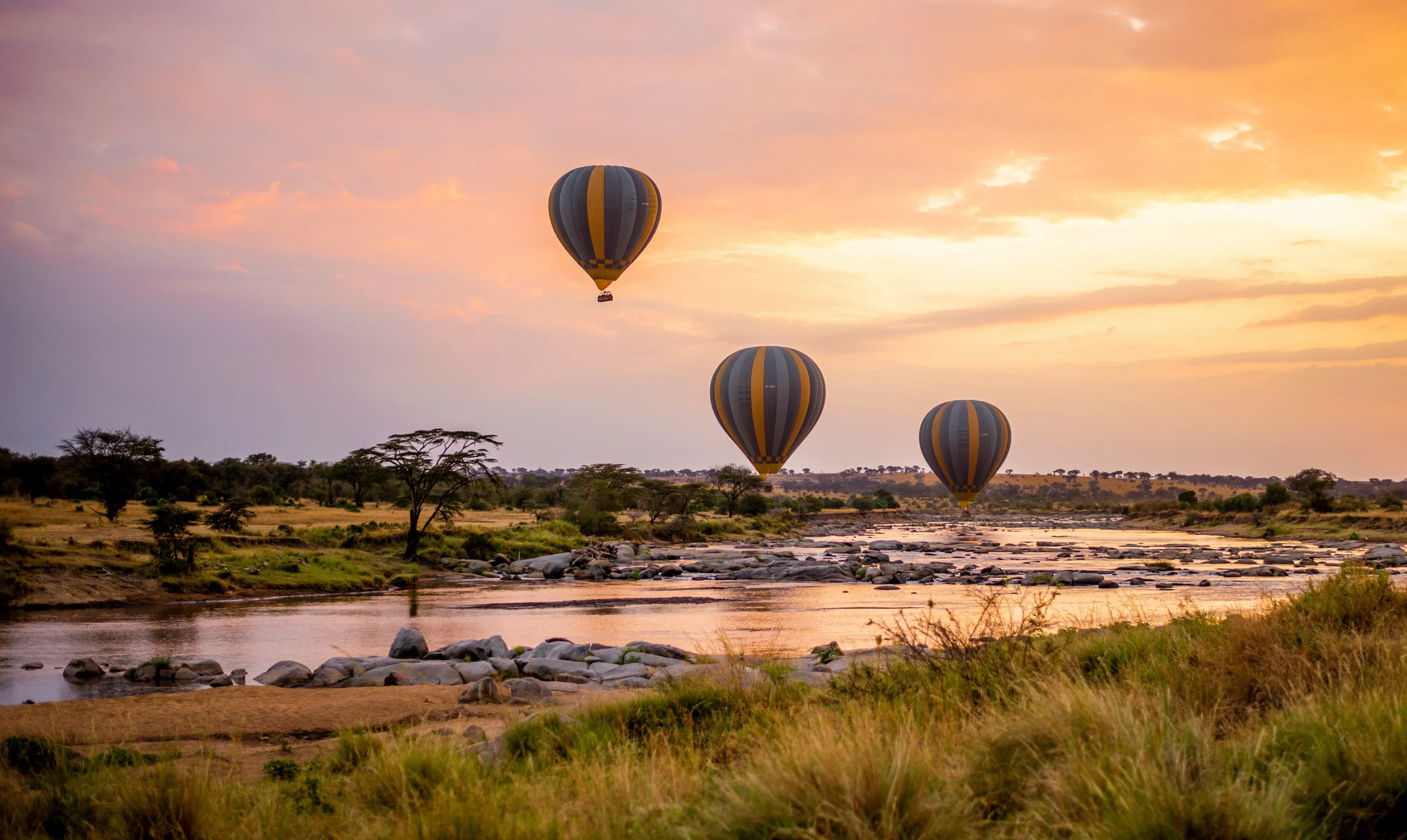
Shared Eco System:
Although the Serengeti National Park and Masai Mara National Reserve are two distinct entities, they are often viewed as part of a single, expansive ecosystem that stretches from southwestern Kenya into northern Tanzania. This interconnectedness is unlike other national parks in Tanzania, such as the newly established Nyerere National Park, which holds the title of the largest national park in both Tanzania and Africa and is located in the country’s southern region. Geographically, both the Masai Mara and Serengeti are traversed by the Great Rift Valley, a monumental geological feature that extends beyond the borders of Kenya and Tanzania. With no physical barriers separating these two parks, wildlife roams freely between the Serengeti and the Masai Mara, reinforcing the concept of a shared wildlife ecosystem. This seamless movement of animals is a key reason why the Serengeti and Masai Mara are often considered as one unified ecological region.
Climate:
Although the vast Serengeti covers a wide area, leading to variations in weather patterns across its expanse, both Serengeti National Park and the Masai Mara National Reserve share similar overall climatic conditions. This is largely due to their location on the expansive, rolling grassy savannah plains that stretch from Southern Kenya into Northern Tanzania. The absence of significant altitude changes between the two areas means that weather patterns, especially temperature, remain relatively consistent. In the Serengeti, average temperatures range from approximately 15 to 25 °C (59 to 77 °F), while in the Masai Mara, they vary between about 12 to 30 °C (54 to 86 °F). This climate similarity enhances the seamless experience of exploring these interconnected wildlife parks.
Wildebeest Migration Across Both Reserves
Before the massive herds of 1.5 to 2 million wildebeest, along with zebras and other animals, make their way into the Masai Mara in July, they have already embarked on a remarkable journey across the Serengeti. This incredible trek is guided by natural instincts, mating cycles, rainfall patterns, and the availability of lush pastures. The Great Migration is a year-round spectacle that unfolds across both the Serengeti and Masai Mara. However, in the Serengeti, these vast herds are often dispersed until around June, when they begin their gradual movement towards the Western Corridor, also known as the Grumeti area.
It is here that the animals regroup into larger herds, creating a breathtaking scene as they cross the river in the northwestern Serengeti, typically from mid to late June. As these majestic creatures continue their journey, they cross into the Masai Mara starting in July, although exact timings can vary due to several factors. Both the Serengeti and Masai Mara offer unique opportunities to witness this natural wonder, with the Serengeti showcasing the initial regrouping of the herds, usually around mid to late June. For more insights and packages into the Wildebeest Migration, click here.
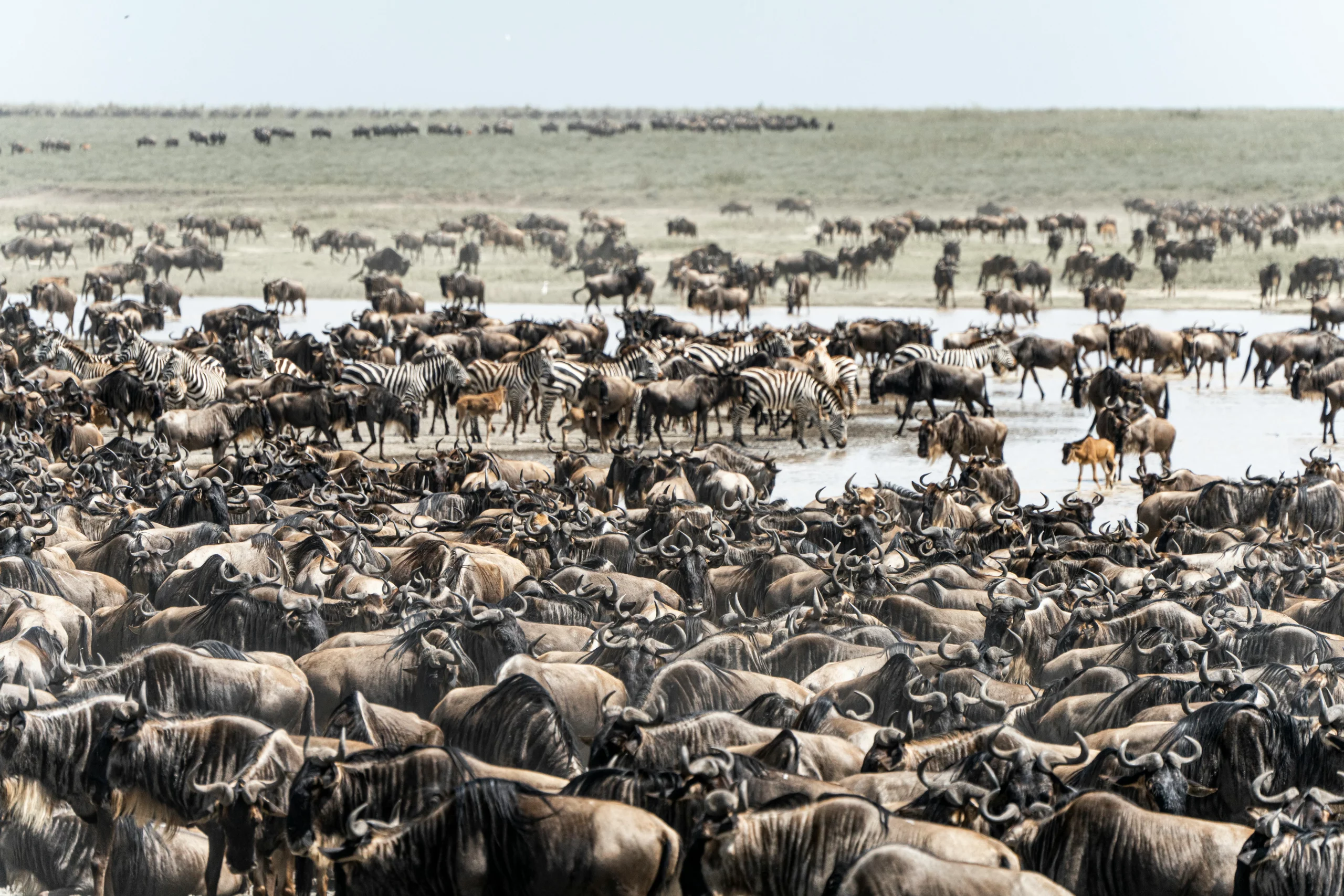
Differences
Now, let’s dive into the key distinctions between the Masai Mara National Reserve and the Serengeti National Park. While these two iconic wildlife destinations share many similarities, their unique features set them apart, influencing the overall safari experience. Understanding these differences can help you decide which park aligns best with your African safari dreams. Whether it’s the sprawling landscapes of the Serengeti or the dense wildlife sightings of the Masai Mara, each offers something special for every traveler. Let’s explore these differences in detail.
Pricing:
When it comes to park entry fees, the Serengeti National Park tends to be more expensive than the Masai Mara National Reserve. This is largely because visitors staying within the Serengeti are required to pay a daily Concession Fee on top of the standard park fee. Altogether, including taxes, spending a day in the Serengeti costs about USD 140 per adult. In contrast, the fee for staying inside the Masai Mara Reserve is just USD 70 per adult. The Concession Fee is essentially a government levy imposed by Tanzania, and this difference in cost doesn’t necessarily reflect the quality of the safari experience. Additionally, accommodation in the Serengeti often comes at a higher price compared to similar lodgings in the Masai Mara. This can be attributed to various factors, such as the greater number of camps and lodges in the Masai Mara, which leads to more competitive pricing there.
Size & Animal Density:
Spanning an impressive 30,000 km² (12,000 square miles), the Serengeti National Park dwarfs the Masai Mara National Reserve, which covers around 1,510 km² (580 square miles). While the Serengeti’s vastness might suggest a greater abundance of wildlife, it’s essential to understand that these numbers are stretched over a significantly larger area. Consequently, the animal densities in the Masai Mara are often perceived to be higher. When embarking on a safari game drive, the proximity of your accommodation to wildlife hotspots plays a crucial role in your experience. In the Serengeti, given its expansive territory, the location of your camp can greatly influence the variety and volume of wildlife you encounter. Unlike the Serengeti, where traversing the entire park in a day isn’t feasible, the Masai Mara allows for more extensive exploration within a single day. This advantage makes it possible to venture from one edge of the reserve to the other, maximizing your wildlife sightings. Please also check out our collection of Tanzania Safari Holidays.
How to Get There:
Accessing these iconic wildlife parks is best done through their respective safari hubs: Nairobi for the Masai Mara and Arusha for the Serengeti. If you’re planning to drive, it takes approximately 5 hours from Nairobi to reach the Masai Mara National Reserve. On the other hand, the journey from Arusha to the Serengeti National Park is a bit longer, taking around 6 hours. Should you start your adventure from Kilimanjaro International Airport, which is about a 45-minute drive from Arusha, you might find yourself on the road for closer to 7 hours. This extended travel time makes flying a more appealing option, especially if you begin your Serengeti safari in the afternoon. For those with a limited timeframe, such as a 3-day Serengeti safari, the schedule can be quite tight compared to a similar itinerary in the Masai Mara. The Masai Mara offers more flexibility, allowing you to maximize your wildlife viewing opportunities within a shorter period.

In sum, choosing between these two iconic safari destinations ultimately boils down to individual preferences and travel goals. Both the Masai Mara and Serengeti National Park offer unique experiences, each with their own set of advantages and challenges. For first-time African safari-goers, the Masai Mara National Reserve is often recommended. It provides an excellent opportunity to witness a wide array of wildlife, including the ‘Big Five,’ while offering a more budget-friendly option compared to the Serengeti.
The Masai Mara also boasts stunning views of the wildebeest migration, especially during the thrilling Mara River crossings. On the other hand, for those seeking a more adventurous and diverse experience, or for travelers who have previously embarked on an African safari, the Serengeti National Park offers an expansive landscape and varied wildlife encounters, albeit at a higher cost.
To explore more about these incredible destinations, check out our Safaris in Masai Mara and Serengeti Safari Packages.


